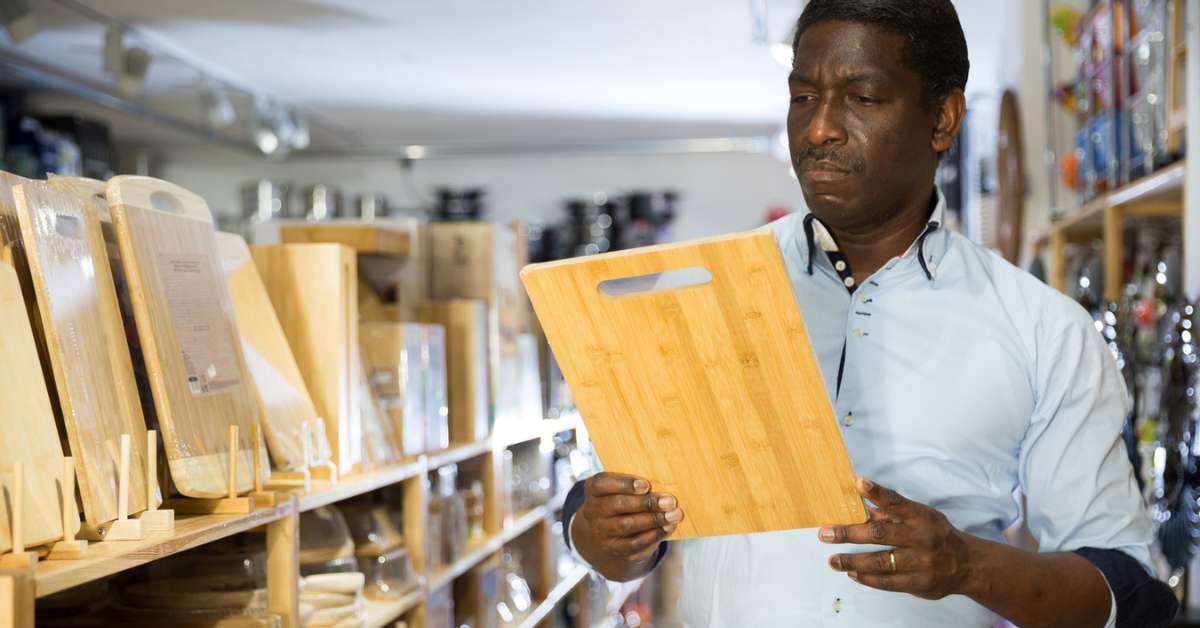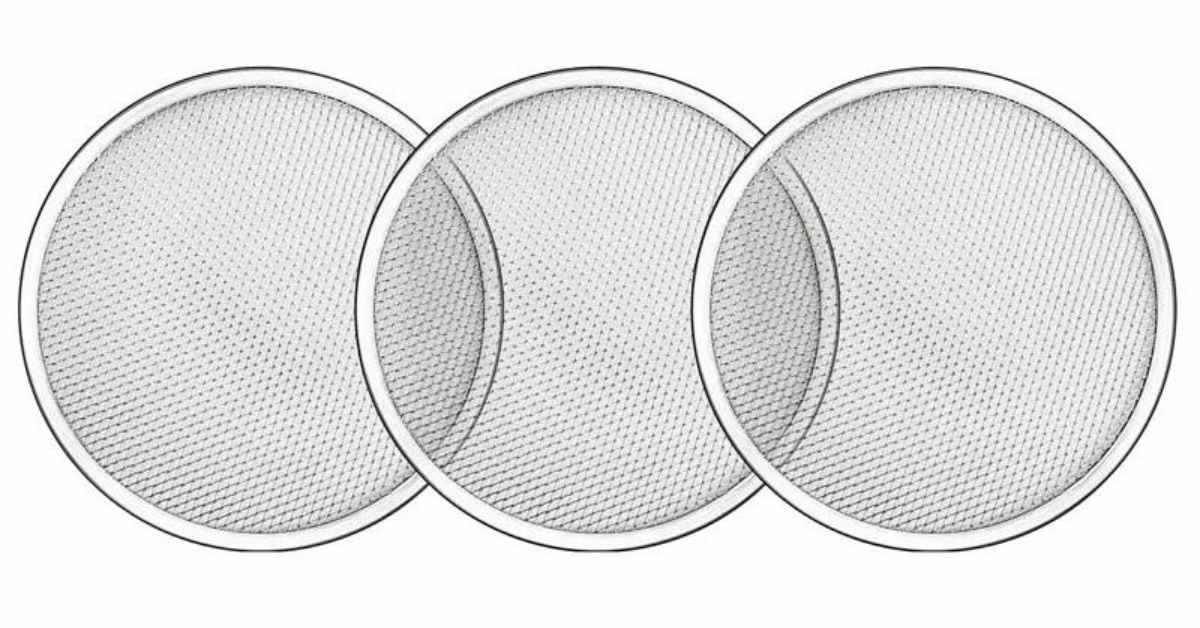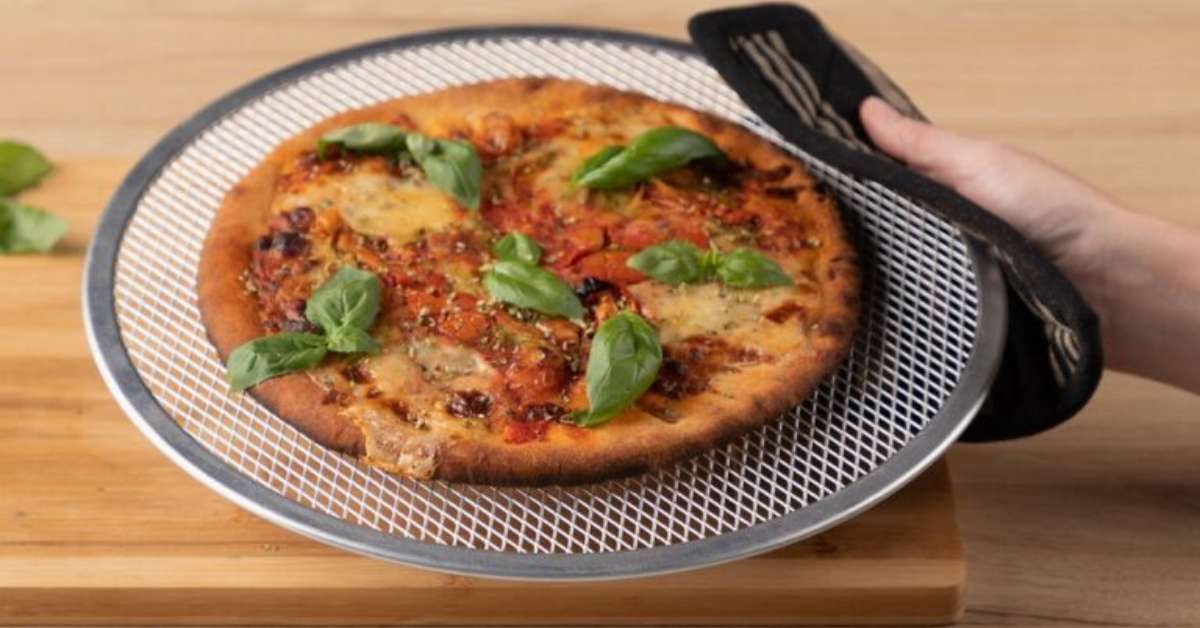Are you a culinary enthusiast or an avid baker who loves experimenting in the kitchen? If so, you’ve come across various cookware and bakeware materials. One material that often raises questions is ceramic. Can you put ceramic in the oven? Is it safe to use? These are essential questions to consider before embarking on your culinary adventures.
In this article, we will explore using ceramic in the oven, addressing the safety concerns and providing you with the information you need to know. So, let’s dive in and unravel the mysteries surrounding ceramic cookware in the oven.
Table of Contents
ToggleWhat is Ceramic Material

Ceramics is a versatile material used for centuries in various applications, including pottery, construction, and cooking surfaces. It is made from a combination of inorganic materials, such as clay, minerals, and natural elements. The composition of ceramic can vary depending on its intended use, but it is generally known for its durability and heat resistance.
Ceramic materials are created through a process of shaping and firing. The raw materials are molded into the desired shape, such as pots, pans, or dishes, and then fired at high temperatures in a kiln. This firing process transforms the raw materials into a hardened, heat-resistant material with excellent thermal conductivity.
One of the critical features of ceramic is its ability to distribute heat evenly, which makes it a popular choice for cooking and baking. Additionally, ceramic cookware is often praised for its non-stick properties, allowing easy food release and effortless cleaning.
Can Ceramic Go in the Oven
The answer to whether ceramic can go in the oven is generally yes. Ceramic cookware and bakeware are designed to withstand high temperatures, making them suitable for use in ovens. However, a few critical factors must be considered to ensure safe usage.
Temperature Limit: Before using ceramic in the oven, it’s crucial to check the manufacturer’s guidelines and specifications. Different types of ceramic may have other temperature limits, and exceeding these limits can lead to cracking or even breakage. Most ceramic cookware can safely handle oven temperatures up to 500°F (260°C), but it’s always best to confirm the specific temperature limits for your piece.
Thermal Shock: Ceramics is susceptible to thermal shock, which occurs when a sudden and drastic temperature changes. To avoid this, you should preheat the oven gradually and refrain from placing cold ceramic directly into a hot oven or vice versa. Gradual temperature changes help prevent the material from expanding or contracting too rapidly, reducing the risk of cracking or shattering.
Quality and Condition: The quality and condition of the ceramic cookware also play a role in its oven safety. Inspect your ceramic pieces for any signs of damage, such as chips or cracks. Damaged ceramic can weaken its structural integrity, making it more prone to breakage under high temperatures. If you notice any damage, you should refrain from using the piece in the oven.
Risks of Using Non-Oven-Safe Ceramic in the Oven
While ceramic cookware is generally oven safe, it’s crucial to understand the risks associated with using non-oven-safe ceramic in the range. Ignoring these risks can lead to potential accidents, damage to the cookware, and even harm to yourself. Here are some essential points to consider:
- Cracking or Shattering: Non-oven-safe ceramic may not be designed to withstand the oven’s high temperatures. Subjecting such ceramics to extreme heat can cause them to crack or shatter, posing a risk of injury from flying fragments. It’s essential to check the manufacturer’s instructions or labeling to ensure the ceramic is oven safe.
- Release of Toxins: Certain types of ceramic, particularly those with glazes or finishes that contain lead or other harmful substances, can release toxins when exposed to high temperatures. If non-oven-safe ceramic is used in the oven, there is a risk of these toxins leaching into your food, making it unsafe for consumption. Always use ceramics explicitly labeled as oven safe and free from harmful substances.
- Fire Hazard: Using non-oven-safe ceramic in the oven can also pose a fire hazard. When ceramic materials are not designed to withstand high temperatures, they can heat up excessively, leading to smoke, burning, or ignition. This can cause damage to your oven and potentially start a fire in your kitchen.
Using only oven-safe ceramic that meets the necessary standards and guidelines is crucial to ensure your safety and protect your cookware. Always check the labeling and instructions provided by the manufacturer before using ceramic in the oven.
How to Identify Oven-Safe Ceramic
When using ceramic in the oven, it’s essential to identify which are safe to ensure safe and successful cooking. Here are some helpful tips for identifying oven-safe ceramic:
Check the Manufacturer’s Instructions
The manufacturer’s instructions and guidelines are valuable for determining whether a ceramic item is oven safe. The packaging or product information should indicate its suitability for oven use. Look for explicit statements such as “oven safe” or “safe for oven use” to ensure you use the ceramic correctly.
Look for Temperature Specifications
Ceramic items that are oven safe will typically specify the temperature range they can withstand. Check for temperature indications on the packaging or labels. The temperature limits may vary depending on the type and quality of the ceramic, so ensure that the desired temperature falls within the specified range.
Inspect for Glaze Quality
The glaze on ceramic can play a significant role in oven safety. Look for ceramics with high-quality glazes that are smooth, even, and well-bonded to the material. Well-made ice helps protect the ceramic from heat damage and ensures it remains safe for oven use.
Research Reputable Brands
Choosing ceramic products from reputable brands known for their quality and safety standards can provide additional assurance of oven-safe usage. Research and read reviews about the brand’s products to gain insights into their reliability and customer satisfaction.
Consult with Experts
If you are still determining the oven safety of a specific ceramic item, consider consulting with cookware experts or contacting the manufacturer directly. They can provide professional guidance and clarify any doubts or concerns.
Oven-Safe Ceramic Cookware
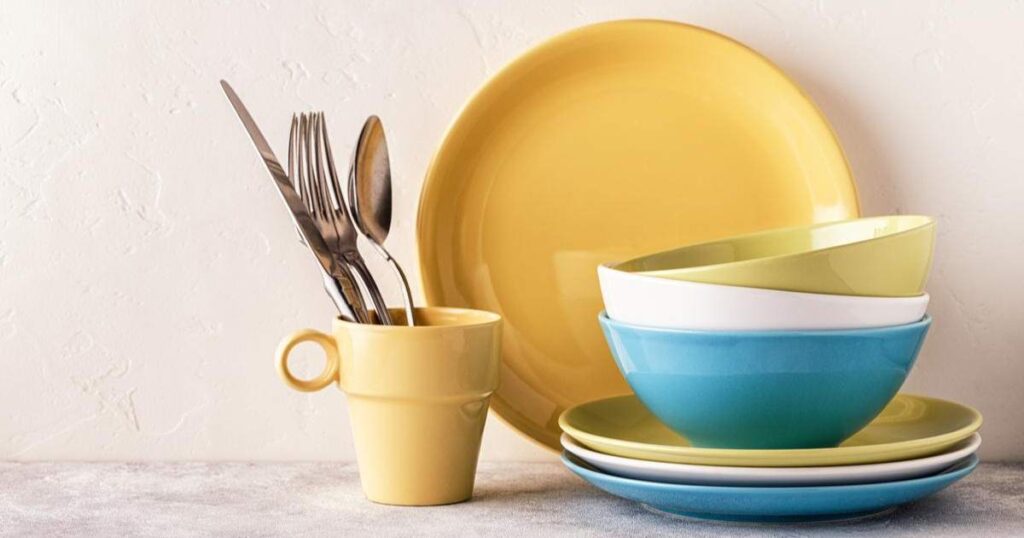
Oven-safe ceramic cookware offers a versatile and reliable option for your cooking needs. Whether roasting vegetables, baking casseroles, or creating mouthwatering desserts, having oven-safe ceramic cookware can enhance your culinary experience. Here are some key points to know about oven-safe ceramic cookware:
Heat Distribution: One of the advantages of using oven-safe ceramic cookware is its excellent heat distribution. Ceramics can distribute heat evenly, ensuring your food cooks consistently and thoroughly. This feature is especially beneficial for dishes that require even heat distribution, such as casseroles and baked goods.
Non-Stick Properties: Many oven-safe ceramic cookware options have non-stick properties, making cooking and cleaning easier. The non-stick surface allows food to release quickly, preventing sticking and reducing the need for excessive oils or fats during cooking. This makes ceramic cookware a healthier choice for your meals.
Durable and Long-Lasting: Ceramic cookware is known for its durability and longevity when correctly cared for. High-quality oven-safe ceramic cookware can withstand the rigors of oven use, resisting cracks, chips, and warping. Investing in well-made ceramic cookware ensures you can enjoy its benefits for years.
Versatility in the Kitchen: Oven-safe ceramic cookware offers versatility in the kitchen. You can use it for various cooking methods, including baking, roasting, broiling, and even slow cooking. From savory dishes to sweet treats, ceramic cookware allows you to explore multiple culinary creations confidently.
Easy Maintenance: Caring for oven-safe ceramic cookware is relatively simple. Hand-washing ceramic cookware is generally recommended to preserve its quality and prevent damage from harsh dishwasher detergents. Additionally, using non-abrasive cleaning tools and avoiding extreme temperature changes when handling hot ceramic can help maintain its longevity.
Types of Ceramic Cookware for Oven Use
When it comes to oven-safe ceramic cookware, various types suit different cooking needs and preferences. Here are some popular types of ceramic cookware that you can safely use in the oven:
Ceramic Baking Dishes
Ceramic baking dishes are versatile and widely used for baking casseroles, lasagnas, gratins, and desserts. They come in different shapes and sizes, allowing you to choose the perfect one for your culinary creations. Ceramic baking dishes offer excellent heat retention and even heat distribution, resulting in well-cooked and delicious meals.
Ceramic Dutch Ovens
Ceramic Dutch ovens are perfect for slow cooking and braising. These heavy-duty cookware pieces have thick walls and a tight-fitting lid, which helps trap moisture and distribute heat evenly. They are ideal for preparing stews, soups, roasts, and other slow-cooked dishes. Ceramic Dutch ovens can seamlessly transition from stovetop to range, making them a versatile addition to any kitchen.
Ceramic Pie and Tart Pans
Ceramic pies and tart pans are a great choice if you enjoy baking pies and tarts. These pans provide excellent heat distribution, resulting in evenly baked crusts and fillings. Ceramic’s gentle heat allows for a beautifully browned crust while keeping the fillings tender and delicious. Ceramic pie and tart pans also present beautifully at the dining table, adding a touch of elegance to your homemade desserts.
Ceramic Roasting Pans
Ceramic roasting pans are an excellent option for succulent roasted meats and vegetables. These pans offer generous space for roasting significant cuts of meat, whole poultry, or vegetables. Ceramics’ heat retention and even heat distribution contribute to juicy and flavorful results. The durable construction of ceramic roasting pans ensures they can withstand high oven temperatures without warping.
Ceramic Pizza Stones
If you love making homemade pizzas with a crispy crust, a ceramic pizza stone is a must-have. These stones are designed to absorb and distribute heat evenly, mimicking the effect of a brick oven. The porous surface of ceramic pizza stones helps draw moisture away from the dough, resulting in a perfectly crisp crust. A ceramic pizza stone in the oven can elevate your pizza-making experience to a new level.
These are just a few examples of ceramic cookware that can be safely used in the oven. Whether baking, roasting, slow cooking, or making pizza, incorporating oven-safe ceramic cookware into your kitchen arsenal can enhance your cooking capabilities and help you achieve delicious results.
Best Practices for Using Ceramic in the Oven
Following some best practices is vital to ensure optimal performance and safety when using ceramic cookware in the oven. By adhering to these guidelines, you can enjoy delicious meals while protecting your cookware. Here are some essential tips for using ceramic in the range:
- Preheat the Oven: Before placing ceramic cookware in the oven, always preheat the oven to the desired temperature. Preheating allows for even heat distribution and helps prevent sudden temperature changes that can cause thermal shock to the ceramic.
- Gradual Temperature Changes: Avoid subjecting ceramic cookware to extreme temperature changes. For example, avoid transferring a cold ceramic dish directly from the refrigerator into a hot oven. Gradually increase or decrease the temperature to minimize the risk of cracking or breakage.
- Use Oven Mitts or Pot Holders: Always use oven mitts or pot holders to protect your hands from burns when handling hot ceramic cookware. Ceramic retains heat well, and the cookware handles can become hot during oven use.
- Avoid Thermal Shock: Avoid placing hot ceramic cookware directly on cold surfaces, such as countertops or metal surfaces, to prevent thermal shock. Always use trivets or hot pads to buffer between the hot ceramic and the hard surface.
- Clean Carefully: After using ceramic cookware in the oven, allow it to cool before cleaning. Wash it gently with warm, soapy water using non-abrasive cleaning tools. Avoid drastic temperature changes during cleaning, such as immersing hot ceramic in cold water, as it can cause damage.
- Avoid Abrasive Cleaners: Avoid using harsh or abrasive cleaners on ceramic cookware, as they can damage the glaze and affect its performance. Stick to mild dish soap and non-abrasive cleaning tools to preserve the quality of the ceramic.
- Store Properly: When storing ceramic cookware, ensure that it is dry and clean to prevent the growth of mold or bacteria. Place a soft cloth or paper towel between multiple pieces to avoid scratches if stacking numerous articles.
How to Avoid Common oven mistakes when using ceramic
Cookware in the Oven can elevate your cooking experience. Still, it’s essential to be aware of common mistakes that can compromise the safety and performance of your cookware. You can ensure a successful and enjoyable cooking process by avoiding these mistakes. Here are some common mistakes to avoid when using ceramic in the oven:
Using Non-Oven Safe Ceramic
One of the biggest mistakes is using ceramic cookware that needs to be explicitly labeled or designated as oven-safe. Always check the manufacturer’s instructions and labeling to ensure the ceramic is suitable for oven use. Using non-oven-safe ceramic can lead to cracks, shattering, or release of toxins, posing risks to your safety and food.
Drastic Temperature Changes
Avoid subjecting ceramic cookware to drastic temperature changes. Placing hot ceramic directly on cold surfaces or transferring it from extreme heat to cold water can cause thermal shock, leading to cracks or breakage. Gradual temperature changes help prevent damage and maintain the integrity of the ceramic.
Overheating or Exceeding Temperature Limits
Respect the recommended temperature limits specified by the manufacturer for your ceramic cookware. Exceeding these limits can damage the cookware or even pose a fire hazard. Understanding the maximum temperature the ceramic can withstand and stay within that range.
Using Metal Utensils
Avoid using metal utensils on ceramic cookware, especially if it has a non-stick coating. Metal utensils can scratch or damage the surface, reducing their non-stick properties and compromising performance. Opt for silicone, plastic, or soft wooden spoons on the ceramic surface.
Stacking Hot Ceramic Cookware
Stacking hot ceramic cookware directly on each other can trap heat and cause damage. Allow each piece to cool before stacking to avoid any cracks or warping. Placing a soft cloth or paper towel between stacked elements can provide an extra layer of protection.
Using Harsh Cleaners
Avoid harsh or abrasive cleaners on ceramic cookware, as they can damage the glaze and affect its performance. Stick to mild dish soap and non-abrasive cleaning tools to preserve the quality of the ceramic. Harsh cleaners can also leave residues that may affect the taste of your food.
Neglecting Proper Maintenance
Proper maintenance is crucial for the longevity of your ceramic cookware. Refrain from regular cleaning and maintenance to avoid the buildup of food residues, staining, or mold growth. Follow the manufacturer’s guidelines for cleaning and storage to keep your ceramic cookware in excellent condition.
How to Clean Ceramic Cookware
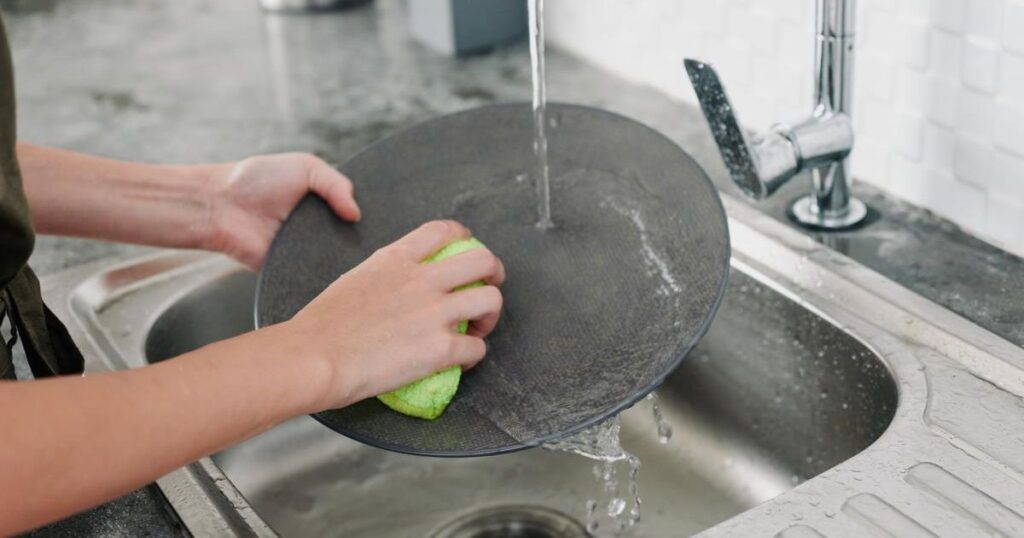
Proper cleaning is essential to maintain the performance and longevity of your ceramic cookware. Following these steps, you can effectively clean your ceramic cookware and keep it in excellent condition:
- Allow Cookware to Cool: After using ceramic cookware in the oven, let it cool completely before cleaning. Placing hot cookware in cold water or using cold water for cleaning can cause thermal shock and potentially lead to damage.
- Soak in Warm, Soapy Water: Fill the sink or a basin with warm water and add a mild dish soap. Place the ceramic cookware in the water and let it soak for a few minutes. The warm soapy water helps to loosen food residues and make them easier to remove.
- Use a Non-Abrasive Sponge or Cloth: Gently scrub the ceramic cookware with a non-abrasive sponge or cloth. Avoid harsh scrub brushes or abrasive cleaners, which can damage the ceramic surface. For stubborn stains or stuck-on food, you can create a paste using baking soda and water and apply it to the affected areas, then gently scrub.
- Rinse Thoroughly: Rinse the ceramic cookware thoroughly with warm water to remove any remaining soap or residue. Ensure all the soap is rinsed off to prevent any soapy taste in your food.
- Dry Completely: Once rinsed, dry the ceramic cookware before storing it. Use a clean dish towel or allow it to air dry naturally. Avoid stacking wet ceramic cookware, as it can promote the growth of mold or bacteria.
- Remove Stubborn Stains: If you encounter stubborn stains that are difficult to remove with regular cleaning, you can try soaking the ceramic cookware in a mixture of warm water and white vinegar for a few hours. The acidity of the vinegar can help break down the stains. After soaking, rinse and clean as usual.
- Avoid Dishwasher Usage: While some ceramic cookware may be labeled dishwasher safe, hand-washing ceramic cookware is generally recommended to ensure longevity. Dishwasher detergents and the high heat of the dishwasher can damage the ceramic surface and affect its performance.
By following these cleaning steps and practicing regular maintenance, you can keep your ceramic cookware clean, free from stains, and in optimal condition. Taking proper care of your cookware will help ensure its continued effectiveness and extend its lifespan, allowing you to enjoy cooking delicious meals for years.
Best Ways to Store Ceramic Cookware
Proper storage of your ceramic cookware is essential to prevent damage and maintain its quality. Here are some best practices for storing ceramic cookware:
Allow Cookware to Cool and Dry
Before storing your ceramic cookware, ensure it is completely cool and dry. Moisture can lead to the growth of mold or bacteria, and keeping hot cookware can cause condensation, potentially damaging the ceramic surface.
Stack Carefully
If you must stack multiple ceramic cookware pieces, place a soft cloth or paper towel between each piece to prevent scratches or damage. This also helps to create a cushioning effect and protect the cookware from impact.
Use Lid Protectors
If your ceramic cookware comes with lids, consider using lid protectors or placing a soft cloth or paper towel between the tops and the cookware to prevent scratches or chipping.
Avoid Overcrowding
Avoid overcrowding your storage space and provide enough room for each ceramic cookware piece. Overcrowding can increase the risk of accidental bumps or falls, which may result in damage.
Utilize Dividers or Racks
To keep your ceramic cookware organized and easily accessible, consider using dividers or racks in your storage area. These can help prevent the pieces from rubbing against each other and reduce the chances of scratches or chips.
Store in a Cool, Dry Place
Chooses a storage area that is cool, dry, and away from direct sunlight. Excessive heat, moisture, or sunlight can affect the integrity of the ceramic material over time. Store the cookware in a cabinet or pantry away from other heavy objects that could fall onto them.
Avoid Stacking Heavy Items on the Top
Avoid placing heavy objects on your stored ceramic cookware. Excessive weight can cause stress on the cookware and increase the risk of damage. Keep the storage area dedicated solely to your ceramic cookware, or choose lighter items to place on top if necessary.
When to Replace Ceramic Cookware
Ceramic cookware is known for its durability and longevity, but there may come a time when it needs to be replaced. Here are some signs to look out for that indicate it’s time to replace your ceramic cookware:
Cracks or Chips: If you notice any cracks or chips on the surface of your ceramic cookware, it’s best to replace them. Cracks and chips can compromise the structural integrity of the cookware and may lead to further damage or even breakage during use.
Loss of Non-Stick Properties: Over time, the non-stick properties of ceramic cookware may diminish. If food sticks to the surface, it may indicate that the non-stick coating has worn off despite proper seasoning and cooking techniques. In such cases, it’s advisable to replace the cookware to maintain optimal cooking performance.
Excessive Wear and Tear: If your ceramic cookware shows signs of excessive wear and tear, such as significant scratches, fading of colors, or a deteriorating glaze, it may be time to consider a replacement. These issues can affect the cookware’s functionality and overall appearance.
Uneven Heat Distribution: Ceramic cookware should provide even heat distribution for consistent cooking results. If you notice significant hot spots or uneven cooking, it could indicate a problem with the cookware’s construction or performance. In such cases, replacing the cookware can help ensure better cooking outcomes.
Safety Concerns: If you have any safety concerns regarding your ceramic cookware, such as releasing harmful substances or cracks that could lead to injury, it’s crucial to replace them immediately. Your safety and well-being should always be the top priority.
Outdated or Discontinued Models: Finding replacement parts or accessories may become challenging if your ceramic cookware needs to be updated or discontinued. In such situations, investing in a new set of cookware readily available and supported by the manufacturer might be more practical.
Ceramic cookware’s lifespan can vary depending on usage, care, and quality. Regularly inspect your cookware for any signs of damage or deterioration, and use your judgment to determine when it’s time for a replacement.
FAQs About Can You Put Ceramic in the Oven?
Can you bake ceramic in the oven?
Yes, you can bake food in ceramic dishes labeled as oven-safe. Just follow the manufacturer’s guidelines for temperature limits and usage instructions.
Is baking in the ceramic safe?
Baking in oven-safe ceramic dishes is generally safe. Ceramic cookware is known for its heat retention and even cooking. However, following proper usage and care instructions is essential to maintain its safety and longevity.
Can you put ceramic in the microwave?
Ceramic dishes labeled microwave-safe can be used in the microwave. However, it’s important to note that not all ceramic is microwave safe. Always check the manufacturer’s instructions before using ceramic in the microwave.
Can you bake a cake in ceramic?
Yes, you can bake a cake in a ceramic dish labeled as oven-safe. Ceramic bakeware, like cake pans, can provide even heat distribution and help achieve desirable baking results.
Is it reasonable to cook in ceramic?
Cooking in ceramic cookware can be a good choice for many people. Ceramics is known for its non-stick properties, heat retention, and cooking. It also adds an aesthetic appeal to the kitchen. However, choosing oven-safe and high-quality ceramic cookware is vital for optimal cooking performance.
Can I use ceramic cookware on the stovetop?
Ceramic cookware is primarily designed for oven use and is unsuitable for direct stovetop use. Ceramic materials may not withstand the high heat and direct flame of stovetop cooking. It’s best to use ceramic cookware in the oven and opt for stovetop-safe materials like stainless steel or cast iron for stovetop cooking.
Conclusion
Using ceramic in the oven can be a safe and convenient option for cooking and baking. It’s vital to ensure that your ceramic cookware is labeled oven-safe and follows the manufacturer’s guidelines for temperature limits and usage instructions. Ceramic dishes provide even heat distribution, retain heat well, and add an aesthetic touch to your kitchen.
Properly handling and caring for your ceramic cookware is crucial to maintain its longevity and performance. Regularly inspect your cookware for any signs of damage and replace it if necessary. You can confidently enjoy delicious meals and treats by following best practices and using oven-safe ceramic cookware. Happy cooking!




